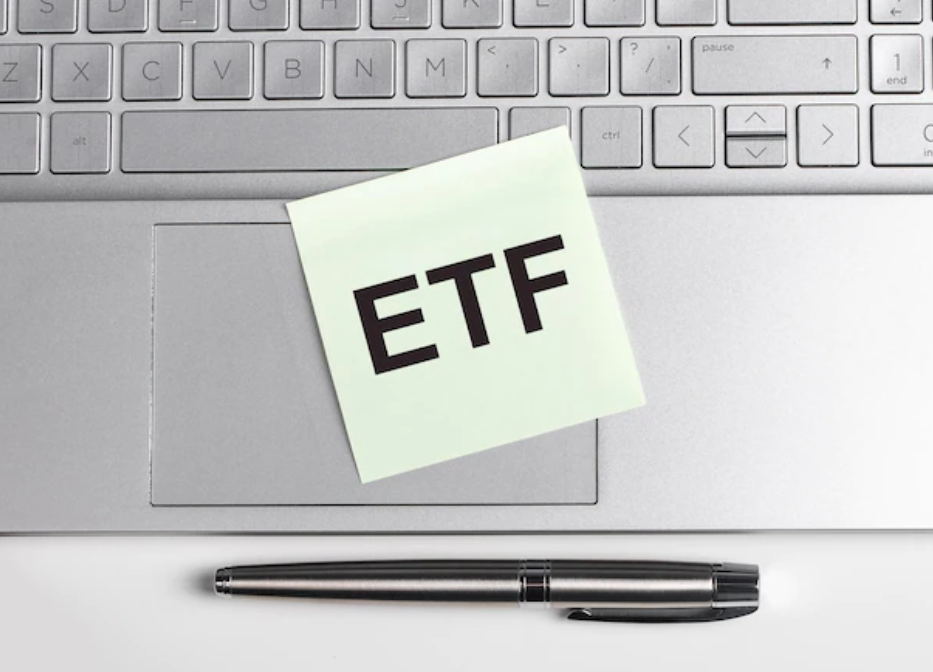Are you looking for a reliable investment option that offers diversification without the hassle? Look no further than mutual funds and ETFs. These investment vehicles have become increasingly popular due to their ability to easily diversify portfolios. While both are promising options, it’s essential to understand the differences between the two and how they can work in tandem to bolster your investment strategy. In this article, we will explore the benefits of mutual funds and ETFs and demonstrate how they can simplify the process of diversifying your portfolio, ultimately setting you on the path to financial success. Whether you are a seasoned investor or just starting out, mutual funds and ETFs provide an accessible avenue to mitigate risk while maximizing returns. So, let’s delve into the world of mutual funds and ETFs, where diversification becomes simple and straightforward.

The Advantages of Mutual Funds and ETFs as Investment Vehicles
When considering investment options, mutual funds and Exchange-Traded Funds (ETFs) stand out as two highly advantageous vehicles for both novice and experienced investors. These investment options offer a multitude of benefits, allowing individuals to effortlessly diversify their portfolios and potentially achieve substantial returns.
First and foremost, one of the key advantages of mutual funds and ETFs is their inherent diversification. By investing in such funds, individuals gain access to a broad range of stocks, bonds, or other assets, thus spreading their risk across multiple securities. This diversification minimizes the impact of market fluctuations on the overall investment, reducing the potential for loss. Moreover, it allows investors to access a variety of industries and sectors they may not have exposure to otherwise, helping to maximize potential returns.
- Liquidity: Both mutual funds and ETFs offer liquidity, allowing investors to easily buy or sell shares on the stock exchange at market prices. This provides flexibility in managing investments based on individual financial goals and current market conditions.
- Professional Management: Mutual funds and ETFs are professionally managed by experienced portfolio managers who monitor the markets, conduct research, and make investment decisions on behalf of investors. This expertise helps to optimize investment performance and minimize risk.
- Cost Efficiency: Investing in mutual funds and ETFs can be a cost-effective option. These vehicles often have lower expense ratios compared to individual stock trading. Additionally, by pooling funds from multiple investors, they offer economies of scale, reducing transaction costs.
- Transparency: Mutual funds and ETFs provide regular updates on the holdings and the net asset value (NAV) of the fund, ensuring transparency for investors. This allows for informed decision-making and a clear understanding of the investment’s composition.
In conclusion, mutual funds and ETFs present numerous advantages for investors seeking to grow their wealth. With their inherent diversification, liquidity, professional management, cost efficiency, and transparency, these investment vehicles offer a well-rounded and accessible approach to achieving financial goals. Consider including mutual funds and ETFs as crucial components of your investment strategy to unlock the potential for long-term financial success.

The Power of Diversification: Spreading Risks and Maximizing Returns
When it comes to investing, the power of diversification should never be underestimated. It’s a simple yet effective strategy that allows you to spread your risks across different asset classes, industries, and geographical regions. By not putting all your eggs in one basket, you can protect your portfolio from the volatility of any single investment.
But diversification does more than just mitigate risks; it also has the potential to maximize returns. By allocating your investments across various sectors, you can capture the upside potential of different market trends. This approach ensures that even if one sector underperforms, the strong performance of others can help offset the losses. It’s like having a safety net that keeps your portfolio stable and resilient, regardless of the market conditions.
- Lowering risks: Diversification reduces the impact that a single investment’s failure can have on your overall portfolio. By spreading your investments, you shield yourself from the poor performance of a particular stock, industry, or sector.
- Seizing opportunities: Diversification allows you to tap into various markets and industries, seizing opportunities for growth that may arise. By diversifying, you position yourself to benefit from the success of high-performing investments.
- Smoothing returns: Adopting a diversified investment strategy can help to smooth out the ups and downs of the market. Even if some investments decline, others may continue to deliver positive returns, ensuring a more stable and potentially less stressful investing experience.
Therefore, it is clear that diversification is a crucial aspect of any successful investment strategy. By embracing this principle, you can enhance the stability of your portfolio, reduce risks, and increase the potential for overall returns. So, why limit yourself to a single investment when the power of diversification is within your reach?
Choosing the Right Mutual Funds and ETFs: Factors to Consider
Factors to Consider in Choosing the Right Mutual Funds and ETFs
When it comes to investing wisely, choosing the right mutual funds and exchange-traded funds (ETFs) is of paramount importance. With a myriad of options available, it can be overwhelming to make the right decision. However, by considering these important factors, you can be on your way to making informed investment choices that align with your financial goals:
- Investment Objective: Begin by assessing your investment objective, whether it’s long-term growth, generating regular income, or diversifying your portfolio. Understanding your goals will steer you towards funds that are tailored to meet your specific needs.
- Risk Tolerance: Evaluate your risk tolerance level honestly. Are you comfortable with volatile investments that may provide higher returns but with greater fluctuations? Or are you more inclined towards stability and capital preservation? Acknowledging your risk tolerance will enable you to choose funds that match your comfort level.
- Fees and Expenses: Consider the fees and expenses associated with the mutual funds and ETFs you are considering. These costs can significantly impact your returns over time. Look for funds with low expense ratios and no unnecessary charges to optimize your investment growth.
Continuing with these key considerations, it’s critical to assess performance history, fund managers’ expertise, and diversification offered by the funds you are eyeing. Remember, by thoughtfully evaluating these factors and conducting thorough research, you can confidently choose the mutual funds and ETFs that are best suited to help you achieve your financial goals and secure your financial future.
Building a Diversified Portfolio: Recommendations for Success
When it comes to investing, a diversified portfolio can be your secret weapon. By spreading your investments across a range of assets, you can mitigate risks, maximize potential returns, and strike a balance that suits your financial goals. Here are some key recommendations to help you navigate the path towards building a successful diversified portfolio:
- Identify your investment objectives: Clearly define what you aim to achieve through your investments. Whether it’s long-term growth, regular income, or preserving capital, understanding your goals is crucial in making informed investment decisions.
- Embrace variety: Diversification isn’t just about investing in different stocks. Explore various asset classes such as bonds, real estate, mutual funds, and even alternative investments like commodities or cryptocurrencies. This can help reduce overall volatility and increase the potential for returns during different market conditions.
- Consider your risk tolerance: Assess your comfort level with risk and tailor your portfolio accordingly. If you’re risk-averse, allocate a larger portion towards stable investments like bonds or established companies. If you’re more risk-tolerant, you may prefer higher-growth assets such as emerging markets or technology stocks.
Remember, a diversified portfolio is not a one-time set-and-forget strategy. Rebalancing your investments periodically is vital to maintain diversification in line with your goals, market conditions, and personal circumstances. It’s important to regularly review and refine your portfolio to ensure it stays aligned with your objectives. By following these recommendations, you’ll be well-positioned to navigate the complexities of the investment world and achieve long-term success.
Wrapping Up
In conclusion, mutual funds and exchange-traded funds (ETFs) offer a simple yet effective way to diversify your investment portfolio. By spreading your investments across a variety of assets and industries, you can mitigate risks and maximize potential returns. Both mutual funds and ETFs provide readily accessible opportunities for individuals to participate in the financial markets, regardless of their level of expertise or capital. The beauty of these investment vehicles lies in their ability to offer diversification without the need for extensive research or monitoring of individual stocks.
Mutual funds are managed by professionals who make investment decisions on behalf of their clients. This hands-on approach ensures that your investments are constantly monitored and adjusted to align with the fund’s objectives. On the other hand, ETFs provide the flexibility of being able to trade throughout the day, just like individual stocks. This allows you to react swiftly to market trends and capitalize on short-term opportunities.
Regardless of whether you choose mutual funds or ETFs, both options offer a wide range of investment choices to suit your financial goals and risk tolerance. From equity funds that focus on stocks, to fixed-income funds that invest in bonds, and even index funds that replicate market benchmarks, there is something for everyone.
Furthermore, mutual funds and ETFs provide instant diversification, reducing the risk associated with investing in a single stock or sector. By investing in a fund that includes multiple securities, you spread out your risk and increase your chances of generating consistent returns over time. This diversification is especially crucial during times of market volatility, as it helps cushion the impact of any single investment underperforming.
Another compelling aspect of mutual funds and ETFs is their relatively low entry barrier. These investment vehicles allow individuals with limited capital to access a diverse portfolio that would typically require a substantial amount of money to replicate on their own. This accessibility makes mutual funds and ETFs an ideal choice for individuals looking to grow their investments gradually while minimizing risk.
In summary, mutual funds and ETFs offer an avenue for individuals to venture into the financial markets with ease. The simplicity and accessibility of these investment vehicles, combined with their ability to provide instant diversification, make them a compelling option for both novice and seasoned investors. Whether you are looking to save for retirement, grow your wealth, or simply diversify your investment portfolio, mutual funds and ETFs provide a straightforward and effective solution. So why complicate things when diversification can be made simple?
As investors are increasingly turning to mutual funds and Exchange Traded Funds (ETFs) as a means of diversifying their portfolios, it is important to understand the similarities and differences between the two investment vehicles. Mutual funds and ETFs have a lot in common, but it’s important to be aware of the differences between them.
Mutual funds are a form of pooled investment that allows investors to purchase a basket of assets in one purchase. This is beneficial as it helps diversify risk within a portfolio while still allowing the investor to benefit from overall growth in the market. Mutual funds are managed by professional money managers who assess market opportunities and build a portfolio of investments that fits the investment goals of the fund. Mutual funds typically come with a higher expense ratio than ETFs, and they also require a minimum initial investment.
ETFs are a type of security that contains a mix of stocks or other assets and trades similarly to stocks. These funds are often organized around a theme or sector, such as a technology fund or a small-cap fund. These funds typically have lower expense ratios than mutual funds and do not require a minimum initial investment. ETFs also provide ongoing liquidity since they trade on an exchange throughout the day.
Both mutual funds and ETFs offer investors an opportunity to diversify their portfolios while managing risk. Mutual funds offer investors the opportunity to benefit from the expertise of professional money managers, while ETFs offer the ease and flexibility of trading like a stock, while still enabling investors to diversify.
In conclusion, mutual funds and ETFs are both excellent vehicles for diversification without sacrificing performance. By understanding the similarities and differences between the two, investors can make an informed decision about which one is best suited for their investment goals.

